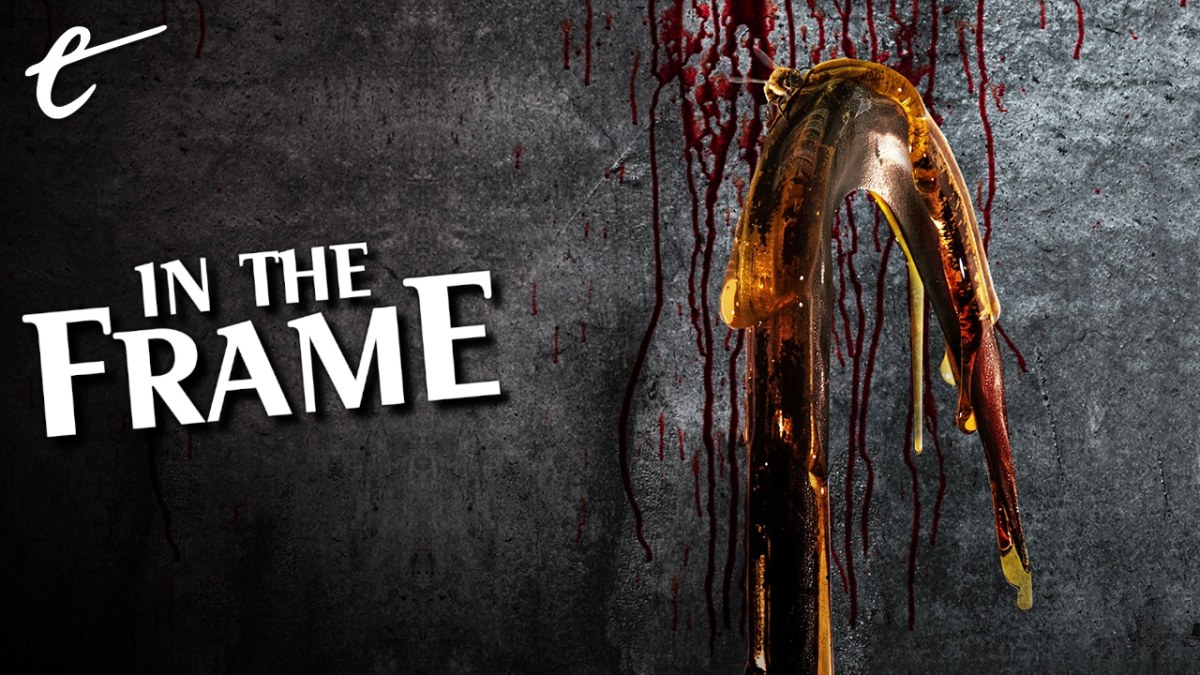It has become cliché to insist that particular works of popular culture are about “trauma.” However, Candyman is very much a work about trauma. More than that, it’s about art that is about trauma.
“Trauma” has become a buzzword in modern criticism. It is often used to lend a piece of pop art a veneer of respectability or credibility. Reviewers are quick to assert that WandaVision is “a deep exploration of trauma” or that Black Widow is “a character-driven exploration of traumatic experiences.” However, in many cases these stories treat trauma as an aesthetic and fail to delve beneath the surface – whether because they are afraid of ambiguity or wary of being too serious.
There is also another extreme, where it can feel like “trauma” is the lens through which too many stories are parsed. Over this past year, there has been a very considered and nuanced discussion about the modern wave of African American horror film and television, including Them and Antebellum, meditating on the commercialization and commodification of the historical suffering of African American people for shock and scares. There is a lot to unpack there.
What makes Nia DaCosta’s Candyman so distinct and so effective is that it is a movie that isn’t just about the trauma experienced by African American communities. It is also a film about the intersection of that trauma with art, as well as both the temptation and the hunger to exploit that trauma as a mode of artistic expression. After all, the film takes place within the art world, focused largely on art dealers and painters helping to perpetuate the latest Candyman myth.
The Candyman franchise has always been about narratives. In particular, the franchise is about who gets to control these stories. The story at the center of the narrative has always been one of trauma. The first three films focus on the story of Daniel Robitaille (Tony Todd), a black artist who fell in love with a white woman in the early 19th century. While the term “lynching” is not used in the original film, he is tortured and murdered by the white townsfolk for that transgression.

Although the three original films all discuss and reference these events, and they are depicted in flashback in Farewell to the Flesh, the films are not about the suffering of Daniel Robitaille. Instead, the three original films are about how that story survived as urban legend, passing down from one generation to the next. Robitaille became the Candyman. In his own words, he is a “rumor” that is “whispered about at street corners” and who can “live in the other people’s dreams.”
Like David Gordon Green’s Halloween, Nia DaCosta’s Candyman largely bypasses the earlier sequels to return to the original beloved film. The story once again takes place in Cabrini-Green in Chicago. Almost three decades removed from the original film, developers have “gentrified the shit out of” the neighborhood. A new bohemian middle and upper class have moved into the area. However, the events of the earlier film have already become an urban legend unto themselves.
Anthony McCoy (Yahya Abdul-Mateen II) is a visual artist stuck in a creative rut after a promising debut. Desperate to prove himself commercially viable and creatively interesting, McCoy begins to dig into the local Candyman myth. William Burke (Colman Domingo), the owner and operator of a local laundry, tells him another story. This story is about Sherman Fields (Michael Hargrove), a local man beaten and killed by police after false accusations of putting razor blades in children’s candy.
One of the central tensions in Candyman concerns the spread of the eponymous myth. The Candyman is a story of trauma that comes to inflict trauma in its telling. Standing in front of a mirror and repeating the name “Candyman” conjures the monster, who then inflicts trauma on the person who presumed to summon him. Burke helpfully articulates the central metaphor: The Candyman is a story that helps process trauma, but bringing that trauma to the surface can be harmful in itself.

As such, DaCosta’s Candyman grapples with the larger debate over depictions of racial trauma in modern horror. This makes sense, as it was produced and co-written by Jordan Peele. Peele’s directorial debut was Get Out, a study of racial violence. Get Out was a phenomenon, described as “the first great movie of the Trump era.” It earned a quarter of a billion dollars. Peele received Best Picture and Best Director nominations at the Oscars and won Best Original Screenplay.
However, much like the awards success of The Silence of the Lambs spawned a wave of (often lesser) imitators, many pundits have traced modern horror’s obsession with depictions of African American trauma back to the success of Get Out. With this in mind, Candyman feels like a metatextual examination of that trend. After all, it is a film about an artist whose work “to spread the story” is literally manifesting trauma in the world and the thorny implications of that.
Candyman is not particularly subtle in the horrors that it invokes. The story of Sherman Fields, an innocent black man murdered by law enforcement, is a sadly recognizable twist on the classic tale of Daniel Robitaille. The climax of the movie involves local police officers swarming into a house and shooting an occupant lying on the ground, another image with unsettling contemporary resonance. Even the repeated appeal to “say his name” carries considerable weight in the current moment.
However, there is a question of who benefits from replaying and recreating these traumas. Some critics argue that the constant recycling of that imagery just leads to more “degradation and exploitation” of communities that have already suffered the original trauma, turning the repetition of these horrors into a grim public spectacle. Speaking specifically of slave narratives, Sarah-Tai Black confessed exhaustion at “seeing this same historical trauma continually played as entertainment.”

To a certain extent, the Candyman franchise has always been about this. In Bernard Rose’s Candyman, a white academic named Helen Lyle (Virginia Madsen) delves into the Candyman mythology. Lyle’s re-legislation of this trauma has horrific consequences for the people around her. Her African American friend Bernadette Walsh (Kasi Lemmons) is murdered. Cabrini-Green resident Anne-Marie McCoy (Vanessa Williams) has her dog murdered and her child kidnapped.
One of the major criticisms of the original Candyman was that it was a film about a white heroine where the majority of the suffering was experienced by African American characters. However, that was very much the point. At one point, Lyle even acknowledges the privilege she experiences as a white woman. “Two people get murdered, the cops do nothing,” she confesses. “A white woman gets attacked, and they lock the place down.” It’s a familiar double standard.
Scottish comedian Frankie Boyle has argued that Lyle is the real villain of Candyman. While some of the finer points of his interpretation might be up for debate in a literal sense, he’s not wrong thematically. One of the central tensions of the movie is Lyle’s attempts to exploit the trauma of a local community for her own academic advancement and her betrayal of their trust. “You said it was our secret,” protests young Jake (DeJuan Guy) after she betrays his confidence. “You lied!”
DaCosta’s Candyman builds on this theme and foregrounds it. The film wrestles with the question of McCoy’s culpability in resurrecting the Candyman myth, in foregrounding it in his artistic exhibition and bringing it to a new generation. The critic Finley Stephens (Rebecca Spence) makes a biting point that McCoy’s appeals to preserve the spirit of the old neighborhood are somewhat hypocritical, given that artists were among those who gentrified it.

However, Candyman understands that McCoy doesn’t exist in a vacuum. He is selling his ideas to a critical and commercial establishment that is largely white and built around fetishizing these depictions of racialized trauma. Clive Privler (Brian King) is the gallery owner who only really becomes interested when McCoy latches on to Candyman. Even Stephens is initially dismissive of McCoy’s work, only to eagerly embrace it when it is tied to a gruesome crime.
This extends beyond McCoy to his long-term girlfriend Brianna Cartwright (Teyonah Parris), who has her own personal traumas relating to her father’s (Cedric Mays) suicide. It’s Cartwright who discovers a horrifically brutal crime scene at one of her boyfriend’s exhibits. Cartwright spends the movie trying to advance her career, to get a big break and move up in the scene. It’s notable that – when she does – her prospective employers only seem interested in tying her to her own trauma.
As such, Candyman delves deeper into the ongoing tension around the fascination with African American trauma in pop culture. One of the film’s central recurring motifs is McCoy’s inability to stop picking at an infected scab on his hand. The film recalls rapper Vincent Staples’ argument that African American artists are constantly expected to “sell trauma.” Pointedly, DaCosta largely avoids brutalizing black characters during the movie’s present-day sequences.
At the movie’s climax, Burke suggests that this trauma and horror should not be kept within the community, but should be directed outwards. In the movie’s closing scenes, DaCosta’s Candyman reflects these horrors back on the people who victimized the community in the first place. Perhaps trauma is a mirror, but Candyman argues that it should be directed at the perpetrators rather than the victims.






Published: Aug 27, 2021 11:00 am